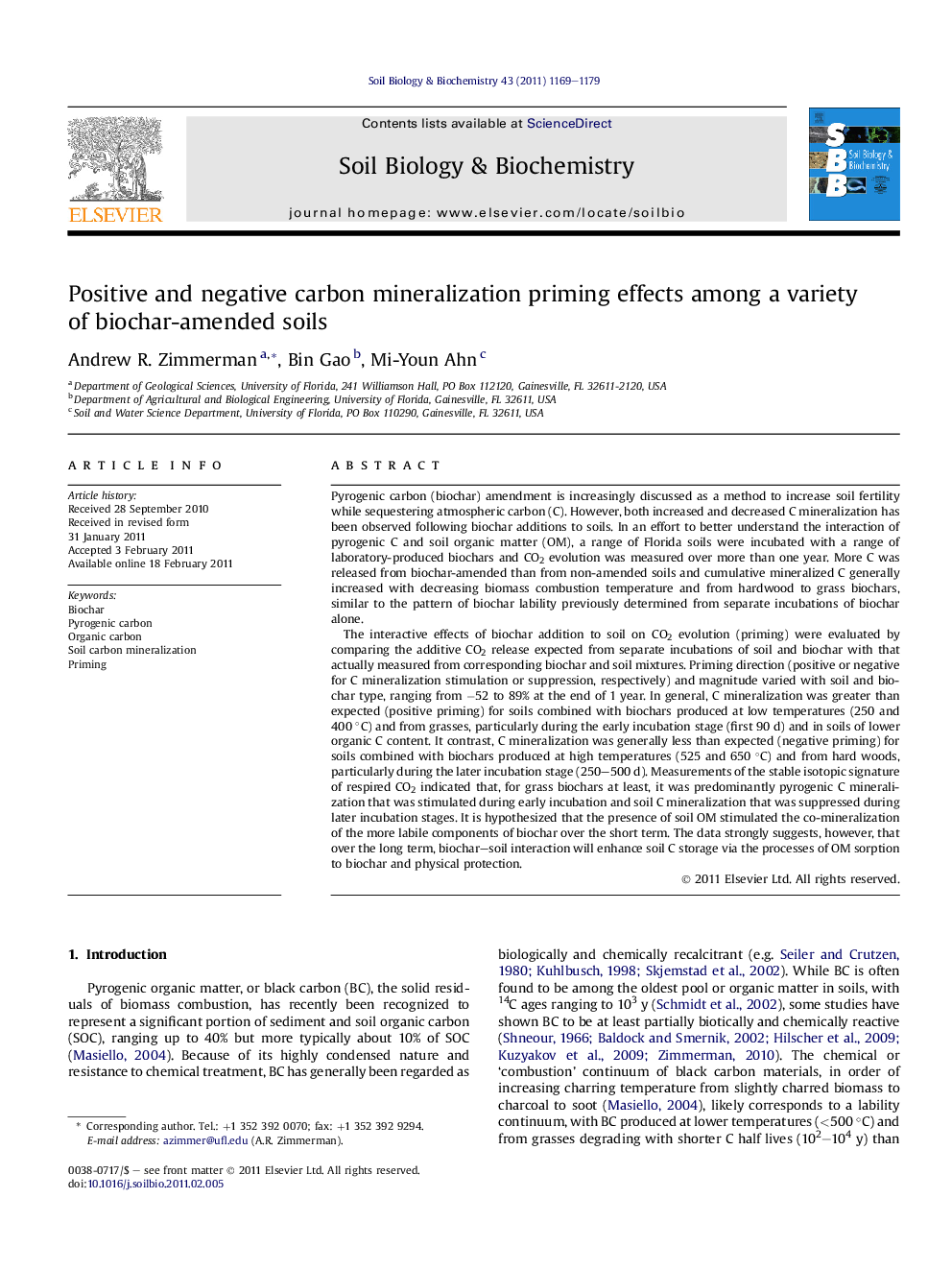| کد مقاله | کد نشریه | سال انتشار | مقاله انگلیسی | نسخه تمام متن |
|---|---|---|---|---|
| 2025293 | 1069991 | 2011 | 11 صفحه PDF | دانلود رایگان |

Pyrogenic carbon (biochar) amendment is increasingly discussed as a method to increase soil fertility while sequestering atmospheric carbon (C). However, both increased and decreased C mineralization has been observed following biochar additions to soils. In an effort to better understand the interaction of pyrogenic C and soil organic matter (OM), a range of Florida soils were incubated with a range of laboratory-produced biochars and CO2 evolution was measured over more than one year. More C was released from biochar-amended than from non-amended soils and cumulative mineralized C generally increased with decreasing biomass combustion temperature and from hardwood to grass biochars, similar to the pattern of biochar lability previously determined from separate incubations of biochar alone.The interactive effects of biochar addition to soil on CO2 evolution (priming) were evaluated by comparing the additive CO2 release expected from separate incubations of soil and biochar with that actually measured from corresponding biochar and soil mixtures. Priming direction (positive or negative for C mineralization stimulation or suppression, respectively) and magnitude varied with soil and biochar type, ranging from −52 to 89% at the end of 1 year. In general, C mineralization was greater than expected (positive priming) for soils combined with biochars produced at low temperatures (250 and 400 °C) and from grasses, particularly during the early incubation stage (first 90 d) and in soils of lower organic C content. It contrast, C mineralization was generally less than expected (negative priming) for soils combined with biochars produced at high temperatures (525 and 650 °C) and from hard woods, particularly during the later incubation stage (250–500 d). Measurements of the stable isotopic signature of respired CO2 indicated that, for grass biochars at least, it was predominantly pyrogenic C mineralization that was stimulated during early incubation and soil C mineralization that was suppressed during later incubation stages. It is hypothesized that the presence of soil OM stimulated the co-mineralization of the more labile components of biochar over the short term. The data strongly suggests, however, that over the long term, biochar–soil interaction will enhance soil C storage via the processes of OM sorption to biochar and physical protection.
► For all soils, C mineralization rate increased after biochar amendment, but decreased after a few months.
► During early incubation, soil generally stimulated the release of biochar-C, likely due to co-metabolism.
► During later incubation, biochar generally suppressed the release of soil C, likely due to sorptive protection.
Journal: Soil Biology and Biochemistry - Volume 43, Issue 6, June 2011, Pages 1169–1179